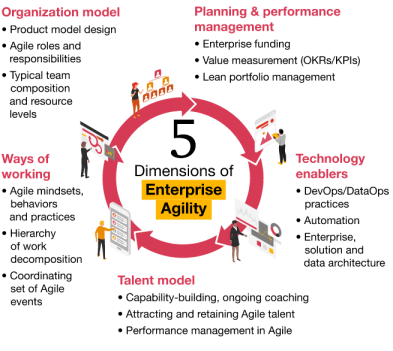Articles
-x-225.6-resized.png)
How Corporate Culture Shapes Customer Experience?
In today's highly competitive business landscape, providing exceptional customer experiences has become a key differentiator for companies. While many organizations focus on customer service strategies and technological advancements, one often overlooked factor that significantly influences customer experience is corporate culture. Corporate culture, defined as the shared values, beliefs, attitudes, and behaviors within an organization, plays a crucial role in shaping how a company interacts with its customers. In this article, we will explore the ways in which corporate culture impacts customer experience and discuss strategies for cultivating a customer-centric culture within organizations.
(Source:freshworks)
Customer-centricity is a business strategy that prioritizes placing the customer at the forefront and as the central focus of all operations. By adopting this approach, companies aim to create positive experiences and foster long-term relationships with their customers. One way to achieve customer-centricity is by combining it with Customer Relationship Management (CRM) practices, which allow businesses to gather comprehensive customer data and gain a 360-degree view of their clients. This data can then be utilized to enhance the overall customer experience.
(Source:LinkedIn)
For instance:
Customer data provides insights into buying patterns, interests, and levels of engagement, enabling businesses to better understand their customers' preferences and needs.
With customer data, companies can identify opportunities to develop customized products, services, and promotions that cater specifically to their most valuable customers.
Utilizing customer lifetime value, businesses can segment their customer base according to high-spending individuals, enabling targeted marketing efforts and tailored experiences for these top customers.
According to research conducted by Deloitte and Touche, companies that prioritize customer-centric strategies are 60% more profitable compared to those that do not focus on the customer. Additionally, companies with CEOs who prioritize customer-centricity are 64% more profitable than their competitors.
Organizations that place a strong emphasis on their customers are able to deliver positive experiences throughout the customer journey. Achieving this requires a significant shift in an organization's structure and culture to fully embrace and embed customer-centric practices.
Alignment with Customer-Centric Values: Corporate culture shapes the values and beliefs of an organization, and when these align with customer-centric principles, it sets the foundation for a superior customer experience. When a company values customer satisfaction, integrity, and transparency, employees are more likely to embody these values in their interactions with customers. Customers can sense when a company genuinely cares about their needs, and a customer-centric culture ensures that every touch point reflects this commitment.
Communication and Collaboration: Effective communication and collaboration are vital for delivering exceptional customer experiences. A corporate culture that encourages openand transparent communication fosters stronger internal relationships and enables teams to work together seamlessly. When departments and teams collaborate effectively, it leads to smoother customer interactions, faster issue resolution, and a holistic understanding of customer needs. A culture that promotes cross-functional collaboration can break down silos, resulting in a more streamlined and coherent customer experience.
(Source:ringcentral)
Leadership and Role Modeling: Leadership plays a pivotal role in shaping corporate culture and, consequently, customer experience. When leaders prioritize customer-centricity, it sends a powerful message throughout the organization.
Leaders who actively engage with customers, listen to their feedback, and incorporate it into decision-making processes create a culture that values customer input. By setting an example of exceptional customer service and empowering employees to follow suit, leaders can inspire a customer-centric mindset at all levels of the organization.
(Source:michaelapage)
Conclusion:
Corporate culture is a fundamental driver of customer experience. By cultivating a culture that values employee engagement, aligns with customer-centric principles, fosters communication and collaboration, encourages continuous improvement and innovation, and demonstrates leadership commitment, organizations can create a positive and memorable customer experience. As businesses strive to differentiate themselves in a competitive market, understanding and actively shaping corporate culture becomes a strategic imperative for success. Investing in a customer-centric culture can yield long-term building customer loyalty, enhancing brand reputation, and driving sustainable business growth.
Sources:
“Customer Experience: The Role of Company Culture”
Franz A. (2023, April 26). “The Challenges Of Building And Sustaining Customer-Centric Organization” https://www.forbes.com/sites/forbescoachescouncil/2023/04/26/the-challenges-of-building-and-sustaining-a-customer-centric-organization/?sh=740ee8ea2681
Ross A. (2023, April 21). “How To Measure The Effectiveness Of Your Brand’s Customer Experience (CX) Journey”
Other Article

Corporate culture in context of strategy and leading the company
Strategy and culture are key tools for leaders to keep their organizations effective and viable. By: Martina Švecová

List of the articles sorted by issues
Corporate culture in context of strategy and leading the company By: Martina Švecová Eight distinct cultural styles By: Martina Švecová

Agile as a way of thinking and part of corporate culture
One of the core principles of the Agile way of thinking is adaptability. By: John Melek and Sama Khafaga

 Add Statement
Add Statement
 Authorization
Authorization
